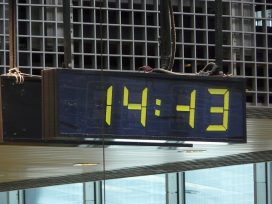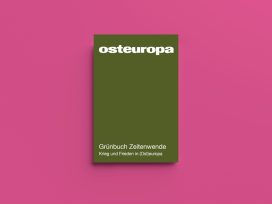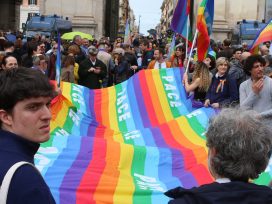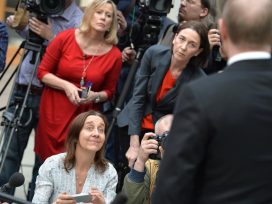Russian art under an illiberal regime
Is an independent artistic statement at all possible in today’s Russia? Political scientist Sergei A. Medvedev ponders the fate of art and artists in a country where most cultural production is heavily state-dependent, and where artists and writers in the provinces are under especially strict supervision.
This is text is based on a lecture delivered by Professor Sergei A. Medvedev, of the Higher School of Economics, Moscow, at the conference Dimensions and Challenges of Russian Liberalism on 27 October 2017. The conference, organised by Eurozine partner journal Reset DOC, in partnership with the University of Turin, the Institute for European, Russian and Eurasian Studies (IERES) at George Washington University, and the College of William & Mary, focused on Russian liberalism and its hybrid, multi-faceted character.
1.
Culture has always survived under any totalitarian regime – Carl Orff wrote music, Wilhelm Furtwangler made some of his best recordings with the Berliner Philarmoniker, and Herbert von Karajan thrived under the Nazi regime (Karajan even managed to join the NSDAP twice). Jorge Luis Borges wrote his immortal prose under Peron, hardly even noticing the political regime. However, there are other stories – Thomas Mann and Herman Hesse had to flee Nazi Germany, and Julio Cortázar, known for his anti-Peronist views, spent half of his life, and died, in Paris, just as Orhan Pamuk, an outstanding critic of the Turkish regime, resides in New York City, away from his beloved Istanbul.
There are many positions and narratives in this big theme, and after all this all boils down to the individual choice of the artist. Some even claim that art can flourish under a totalitarian government which invests heavily in the symbolic sphere, takes care of its artists, or controversially produces creative tension between the government and the artist, as evident, for instance, in the music of Dmitry Shostakovich.
2.
However, the contemporary Russian case has significant peculiarities. First and foremost, it is defined by Russia’s distributive economy and corporate society, to use the terminology of sociologist Simon Kordonsky. Creative industries are part of the state distributive system, as budget transfers comprise the bulk of their income, even under market conditions. Likewise, most artists and writers are part of state corporations, bound by a certain corporate code and professional institutions. There are of course many that stay out of the system, and survive solely by selling their product, but the main cultural production in a country is heavily state-dependent, and in the provinces artists and writers are under especially strict supervision.
The situation is dualistic. On the one hand, the state can provide substantial benefits and grants (e.g. the popular and controversial theatre director Kirill Serebrennikov received substantial state funding for his productions), but on the other it increasingly demands political loyalty and ideological conformity to the official discourse.
3.
The situation has significantly deteriorated in the current decade. The state, the Orthodox Church, and conservative activists and radical fundamentalists have all infringed on artistic freedom:
- First and foremost, this is an offensive by the Russian state that reclaims spheres of political, economic and social autonomy in its spectacular assault on Russian society. Education, memory politics, culture and art are all subject to increasing state controls and ‘nationalization’: they are seen as ‘transmission belts’ in the national cultural policy, stressing patriotism, opposition to the West and Russia’s unique moral standards, as formulated and promoted by the Minister of Culture Vladimir Medinsky.
- Secondly, there is the increasing political and public role of the Russian Orthodox Church, pursued not only by Patriarch Kirill but also by the ‘shadow cardinal’ of Russian politics Putin’s personal confessor, Bishop Tikhon (Shevkunov). The church, in contradiction to the Russian Constitution which proclaims Russia to be a secular and a multi-confessional country, increasingly seeks to be the custodian and the ultimate authority on public education, morality and culture.
- Thirdly, a conservative turn in Russian politics has awakened the clerical and fundamentalist forces in society, eager to censor any form of modern culture. Indeed, the moral crusade has become the trademark of new Russian conservatism, lambasting the decadence and permissiveness of western culture, and stressing the moral superiority of Russian culture. Indeed, offence and indignation has become the dominant public discourse in Russia, with groups of the ‘offended’ ranging from Orthodox activists and various ‘veterans’ to ‘officers’ and ‘concerned parents’. They are now dictating the new limits of culture and art.
The cultural discourse in Russia is thus contained by the triangle between the state, the Church, and civil activists speaking on behalf of ‘indignant public’.
4.
The recent history of Russia is full of cases of censorship, stigmatization and destruction of works of art, or severe limitations of artistic freedom. Some of the outspoken cases include the pogrom of the exhibition ‘Beware of Religion’ at the Sakarov Center in 2003, or the destruction of the sculptures of Vadim Sidur at the exhibition in the Manezh by Orthodox activists in 2015. In the same year, the controversial staging of Richard Wagner’s Tannhäuser resulted in a criminal investigation against director Timofei Kulyabin, while performances of the musical Jesus Christ Superstar were cancelled in Omsk and Rostov-on-Don after Orthodox protesters and Cossacks claimed it mocked the image of Christ. Ironically, the same musical was considered religious propaganda in the Soviet Union – and now it is blasphemy. In October 2015, a Moscow exhibit by American photographer Jock Sturges, showing portraits of naked children and their families, had to close after an activist group ‘Officers of Russia’ blocked access to the gallery, and a protester brought a bottle of urine to throw on the prints. There are multiple cases of such intimidation and obstruction of art.
The movie industry is no exception to such pressure: the release of the critically-acclaimed film Leviathan, by director Andrey Zvyagintsev, was accompanied by a massive denial campaign in the Russian press which considered the film anti-Russian, and the recent release of the film by Alexei Uchitel’, Matilda, telling a love story between the future Tsar Nicholas II and ballerina Matilda Kschessinskaya, elicited fierce protest from Orthodox fundamentalists who saw it as defamation of the canonised Tsar, burnt cinemas and cars, and forced many cinemas in Russia to cancel screenings.
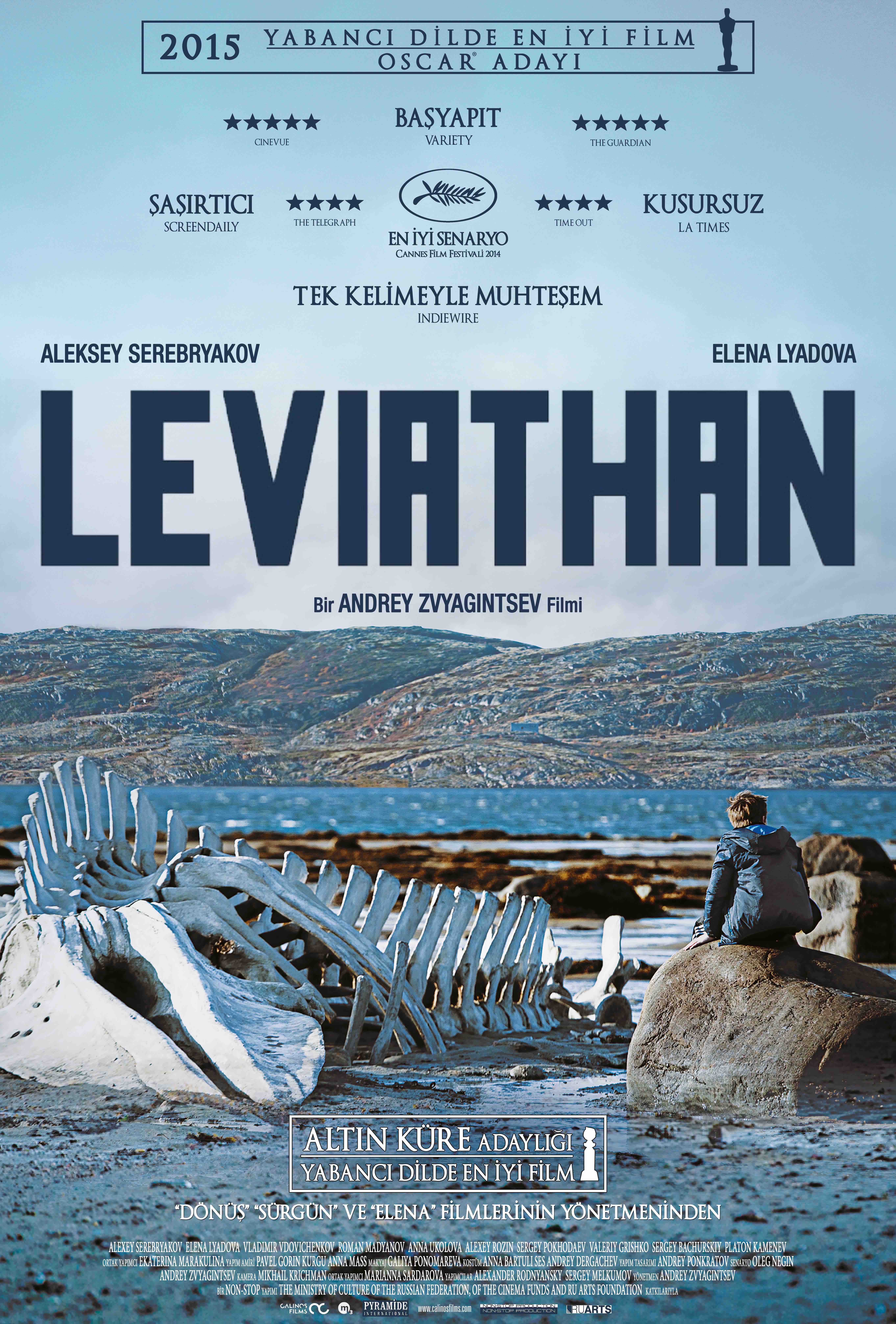
Leviathan official movie poster
5.
Any talk about art and state in Russia would be incomplete without mentioning the criminal case against Kirill Serebrennikov. A star director of international acclaim, and once a darling of some in Russia’s echelons of power, Serebrennikov and his innovative theatre project Gogol-Center found themselves in the midst of a criminal investigation, including charges of fraud and misappropriation of budgetary funds. The director is currently under house arrest. This could be interpreted as a purely criminal case, but in Russia’s selective law enforcement, such high-profile cases are unavoidably political, and this above all is a clear signal to the Russian creative elites that no one is immune. Earlier this year, Serebrennikov was confronted with a case of censorship when the premiere of his ballet Nureyev, which made no secret of the legendary dancer’s homosexuality, was abruptly dropped by the Bolshoi (it has since been rescheduled for early December 2017) – so his case should be seen in context.
6.
Is an independent artistic statement at all possible in today’s Russia? In selected cases, yes. One such case is teatr.doc, a small independent theatre company that makes open-minded and critical productions, and is financed entirely by the audience through ticket sales and donations. It comes under pressure from the Moscow city authorities, and often has to change locations, but it still survives, and remains popular. Unofficial art still finds its way to the audience, especially in visual arts, but remains on the fringes of mainstream culture. Whenever a work of art becomes big enough to make it to onto their radar screens, it has to conform to the official institutions of culture – the state can either ban or support it, but very often this is suffocation by embrace.
7.
Finally, one should mention protest art carrying a political statement. The most outstanding case is the art of Pyotr Pavlensky, an action artist using his body as a medium for creating memorable performances: stitching up his mouth in front of the Kazan Cathedral in St. Petersburg in 2012; nailing his scrotum to the cobbles of Red Square in Moscow in 2013; wrapping his naked body in a cocoon of barbed wire later the same year; setting on fire a barricade of tyres in St. Petersburg in support of the Maidan in Kiev in 2014; and ultimately setting fire to the doors of the FSB building in Lubyanka Square Moscow in November 2015. For this last action, he was charged with vandalism and sentenced to a hefty fine – and has now fled to France with his family, seeking political asylum. This, perhaps, is an omen of the route and direction of Russian protest art.
Published 23 November 2017
Original in English
First published by Reset DOC (26 October 2017)
Contributed by Reset © Sergei A. Medvedev / Reset DOC / Eurozine
PDF/PRINTPublished in
In collaboration with
In focal points
Newsletter
Subscribe to know what’s worth thinking about.
Related Articles

Russian art museums and galleries, navigating Putin’s censorship, either conform or risk closure. Dissenting cultural workers are sacked, artists arrested. Pro-war propaganda is both sardonically replacing exhibitions once celebrating Soviet Ukraine in Russia and eradicating Ukrainian culture in the occupied territories.
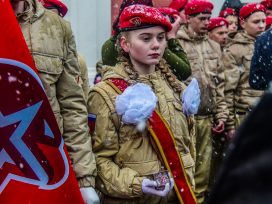
Intellectual violence
The militarization of education in Russia
Education has become another battleground in the Kremlin’s campaign to militarize the Russian public consciousness. Youth organizations, book bans, changes to school curricula – all amount to a ‘special anthropological operation’.

